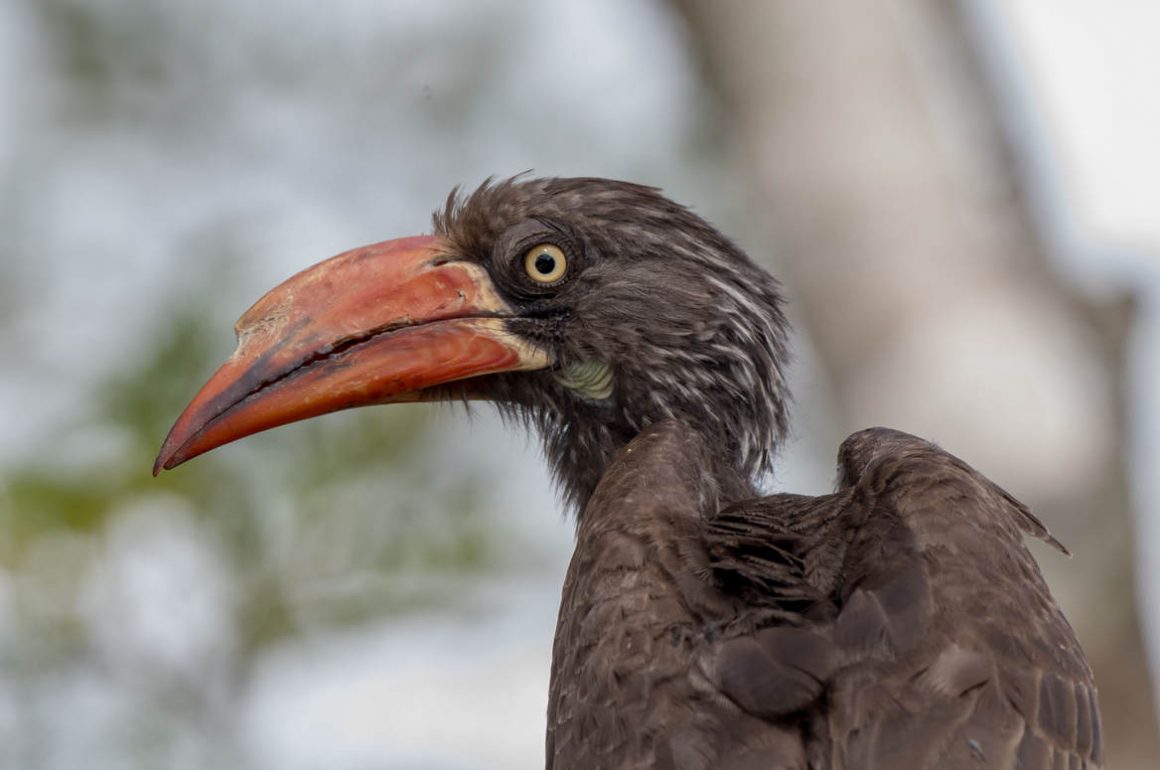
Ndumo Game Reserve lies in the Easternmost part of South Africa, close to the border of Mozambique and Eswatini. It is not particularly big but has a reported 430 bird species including migrants, though during my short stay it seems I missed most of the key attractions among them. Pel’s Fishing Owl, where were you?
The Black Heron – besides looking rather cool, though not really very black – also has an interesting fishing technique. In a 1946 paper, it is called “under-wing fishing”, while nowadays the term “canopy fishing” seems to be preferred.
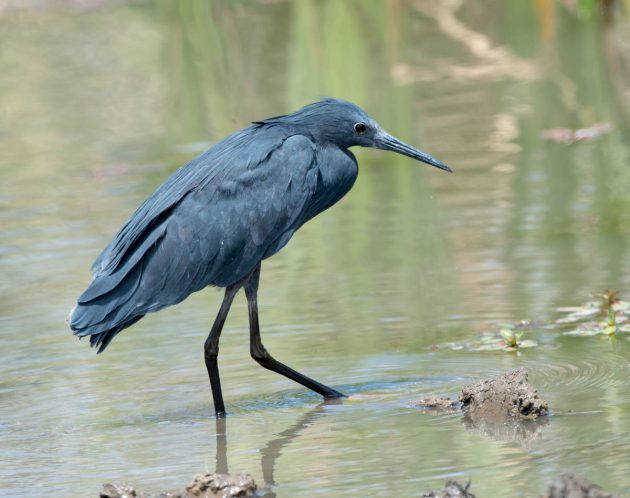
It goes like this: While fishing, the bird tucks its head down and uses its wings to create a shady area.
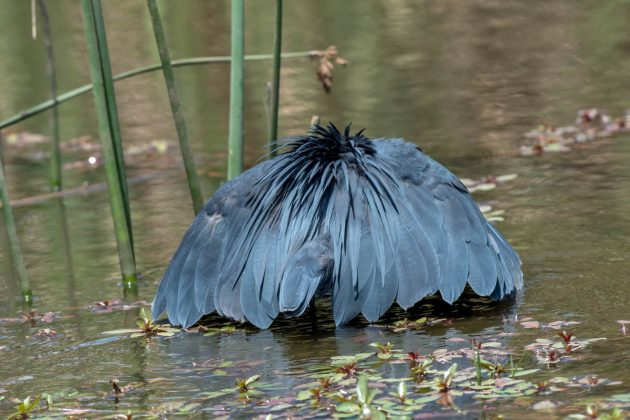
Apparently, the shady area attracts small fish seeking a place to hide – then, they are captured by the heron.
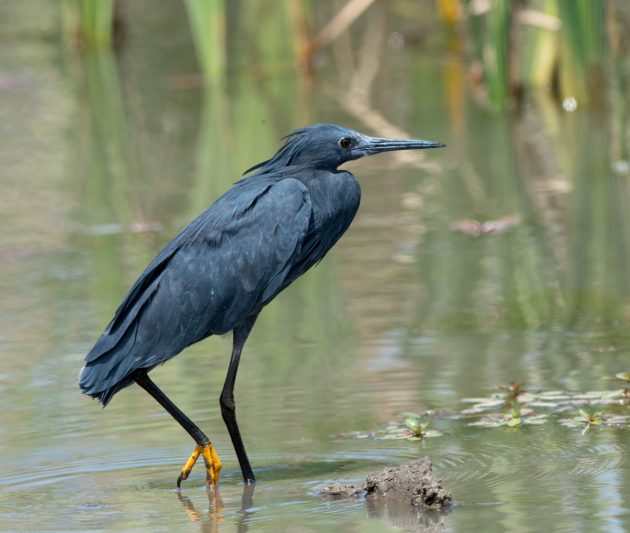
Or the bird just prefers to look into a shady area because it forgot to bring its sunglasses.
Sometimes – scanning through scientific literature – one stumbles across something weird or exciting. Such as in this case of a report on different Blue Waxbills. In this study (actually published in July 1965, a few months before I was born), they found the following: After fledging, young are recognized individually and strange young are not fed, except (rarely) by individuals with no young of their own. In three cases of adoption the common factor was that the adopting individual was sexually attracted to one of the real parents of the young.
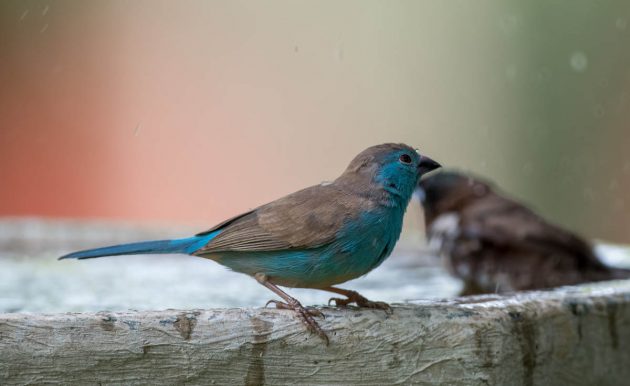
If that isn’t a great basic plot for a soap opera, then what is? Of course, the exact wording would have to be toned down a bit, but a premise such as “I want to adopt you because I would really like to f*ck your mother/father” would certainly find its audience.
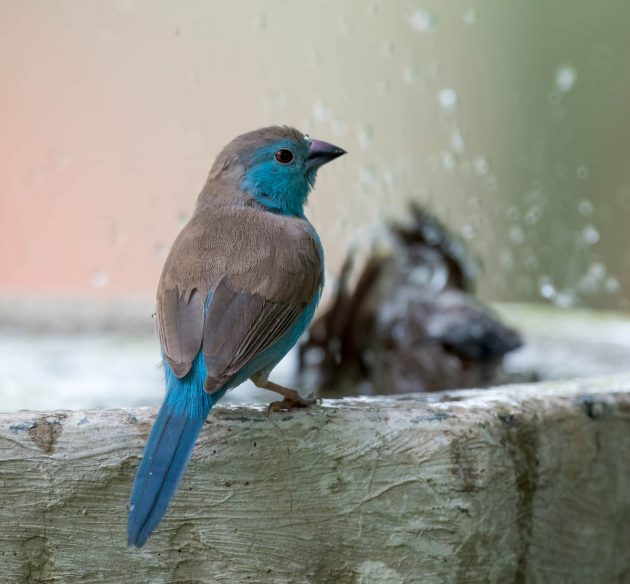
And of course, what you see in the background of these two photos is a Bronze Mannikin, giving me what is perhaps one of the best links in the personal history of my bird blog writing (low standards, admittedly).
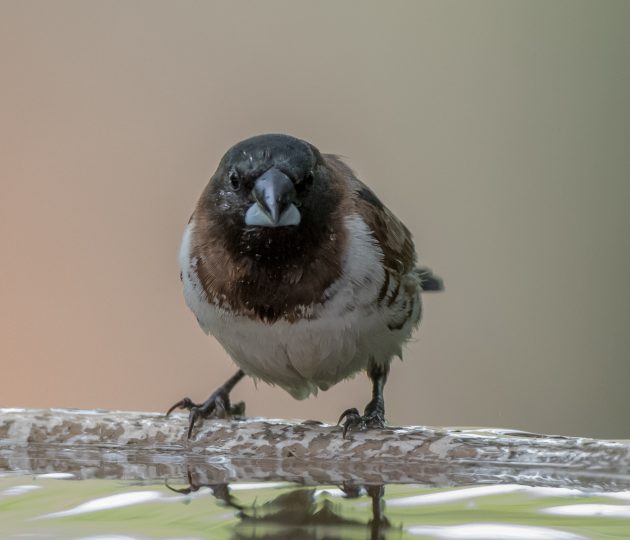

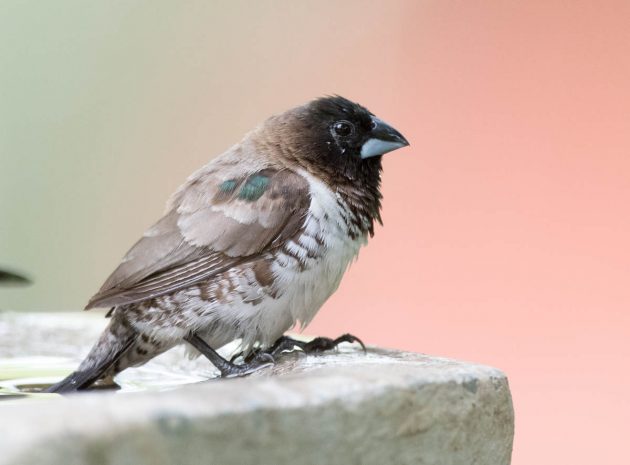
Poor researchers Nicola Coumi and Rob Slotow failed to find anything particularly interesting about vigilance in Bronze Mannikin groups. Undeterred, they summarize their results with an upbeat call for more research: “Despite our inability to detect patterns of vigilance for other flock members, we emphasize the importance of studies to elucidate such a process.” I wish I had this kind of optimism.
I am sure it has some value, but would I really want to spend a few months or even years on “Ticks on Crested Francolins and on the vegetation on a farm in Limpopo Province, South Africa“?
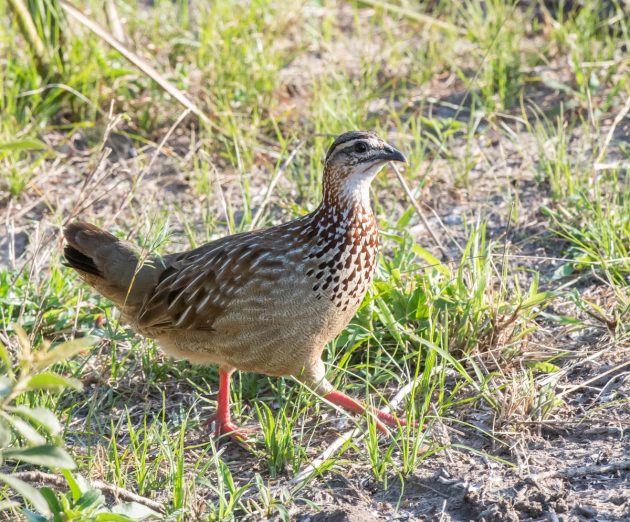
Well, A.C. UysI and G. Horak did.
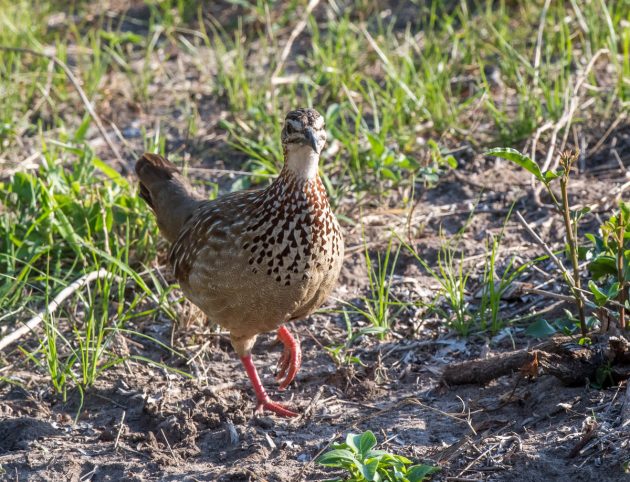
The Crowned Hornbill is among those hornbills in which during incubation the female seals herself into a tree cavity using her own droppings. If you want to get a detailed step-by-step description, see here. Mind you – it is indeed a description, not a video, as the research was done in 1952. They probably did not even have Twitter then.
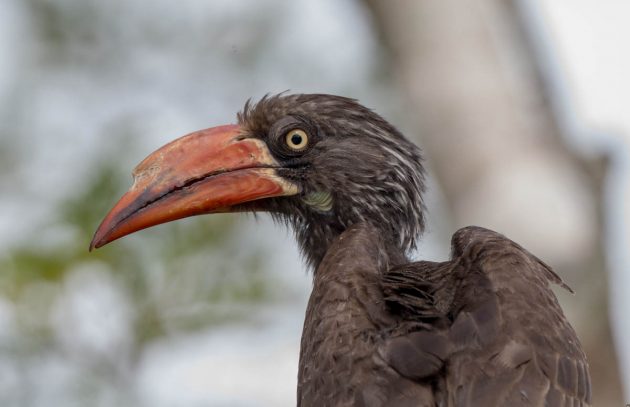
Great White Pelican is not just the name of a non-existent glam-rock band but also of a bird species.
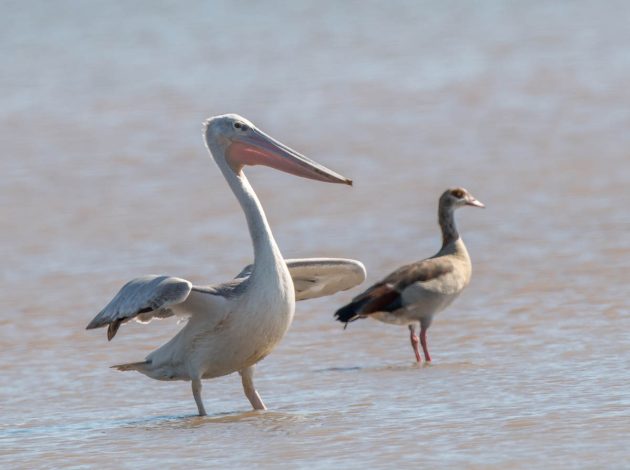
It is one of the largest flying birds in the world and seems to be capable of social learning (source).
Greater Flamingos are considered cooperative breeders as fledglings are raised in a creche, in which large numbers of young are watched by multiple non-breeding adult greater flamingos.
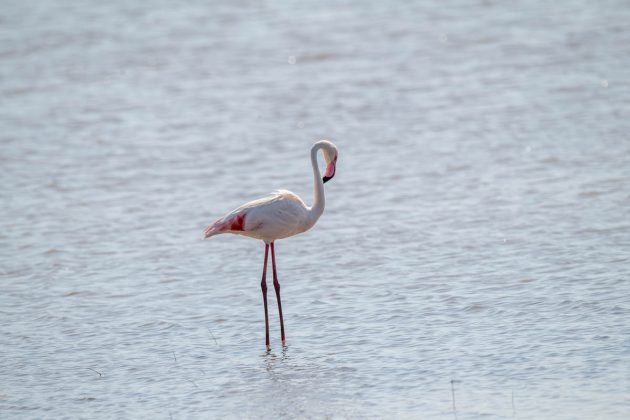
Interestingly, adults that are supervising creches tend to be hostile towards hatchlings if they do not have young in that creche but not if they have hatchlings in the creche (source).
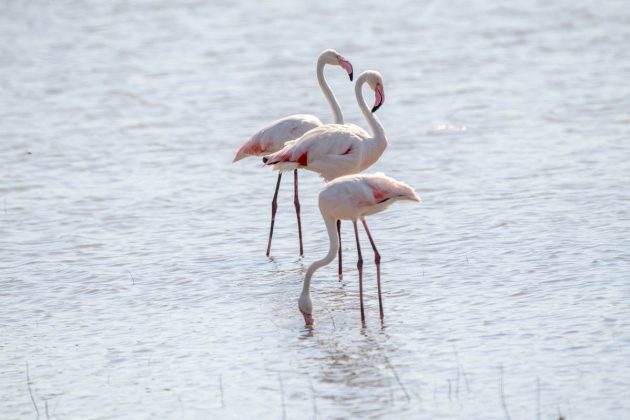
This is different from me – I would probably be in a bad mood if I had to supervise a bunch of children, whether or not any of them are mine.
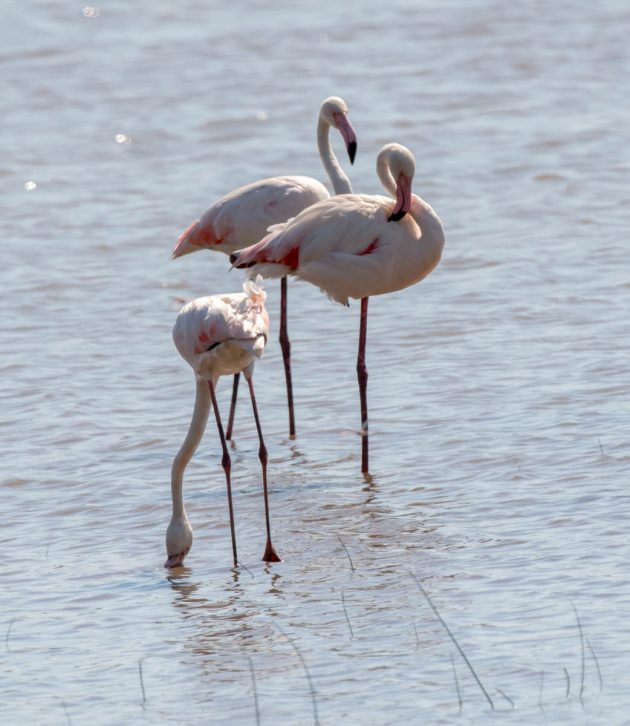
The Latin species name of the Grey Waxbill is perreini, honoring the French naturalist Jean Perrein (1750-1805) who apparently managed to die of malaria while traveling in the United States (Covid as a cause of death was not yet invented then).
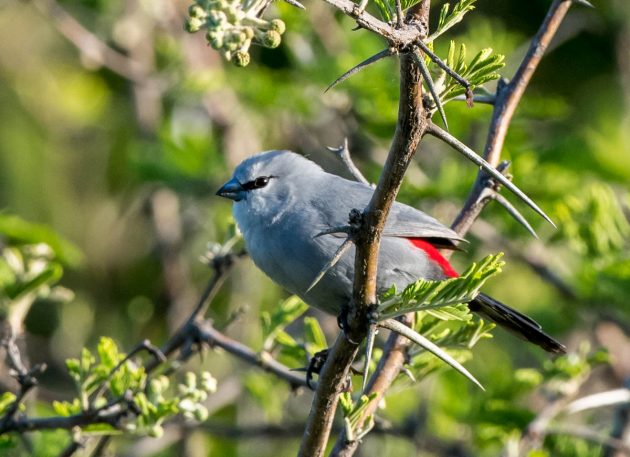
Well, Ndumo is a malaria area, so at least there is some connection.
I am not quite sure what the exact relationship is between eBird and the HBW. My understanding is that since March 2020, the HBW is integrated into eBird (source). So, it is a bit strange that eBird calls the Hadada Ibis “a large, bulky, gray-brown ibis” while the HBW goes for “a relatively small ibis”. Both agree that it is a bird though.
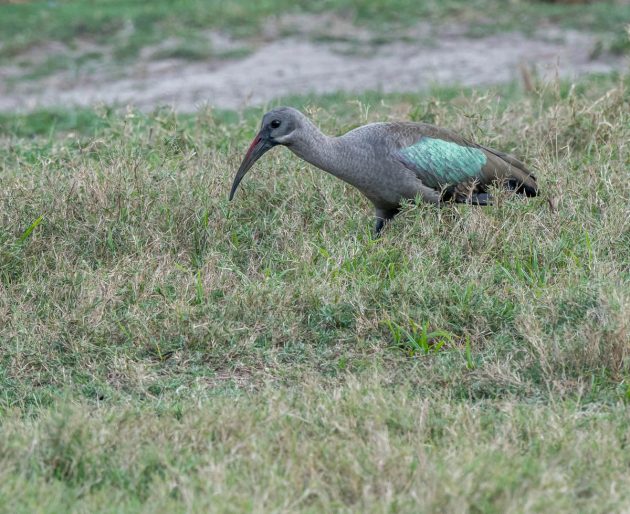
“I am big, and I am small. I am a riddle, and I am a Hadada Ibis“.
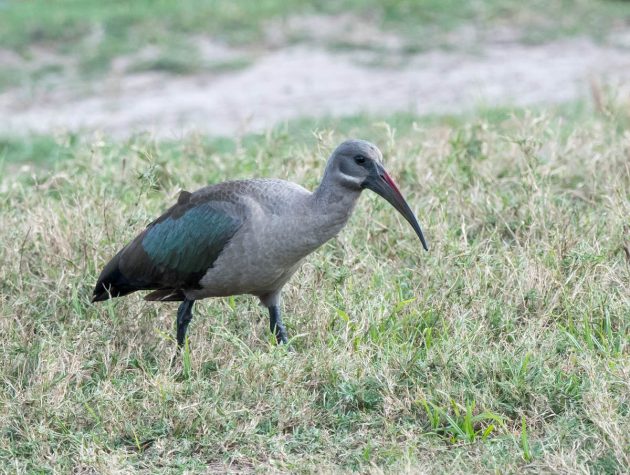
The HBW gives the following explanation for the Latin species name Lebonyana of the Kurrichane Thrush: “Tswana name Lebonyana for the Red-billed Buffalo Weaver Bubalornis niger, given erroneously to the Kurrichane Thrush which also has a red bill”.
Then, in the field identification part of the species description, the HBW states that the bill of the Kurrichane Thrush is “orange, yellower basally”. Maybe they only looked at black-and-white photos when making up the name explanation above.
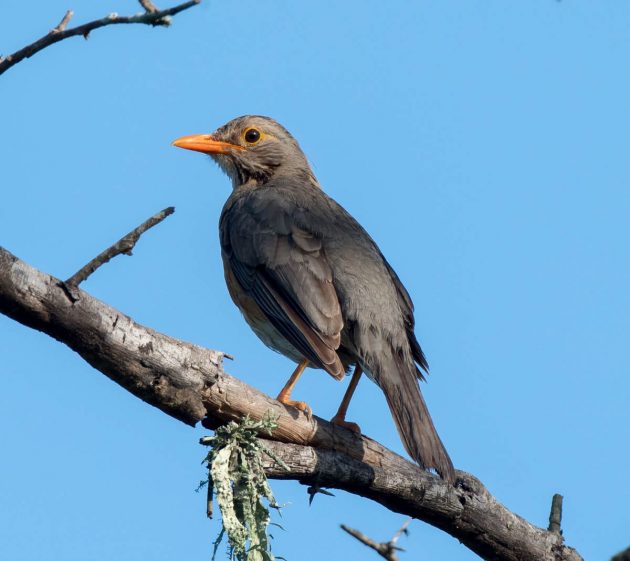
Bill orange to me and you and some HBW staff, red to others. Democracy in action.
Being the host of Red-billed Oxpeckers is a mixed blessing. On the one hand, an adult will take nearly 100 blood-engorged female ticks in a day. On the other hand, their preferred food is blood, and they also feed on it directly, pecking at a mammal’s wounds to keep them open (source).
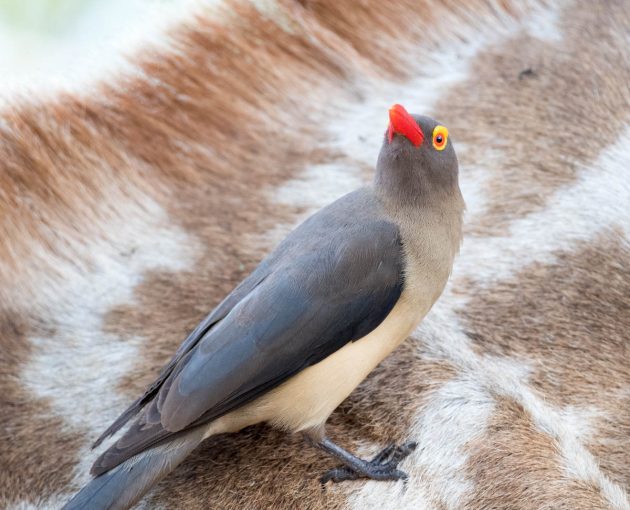
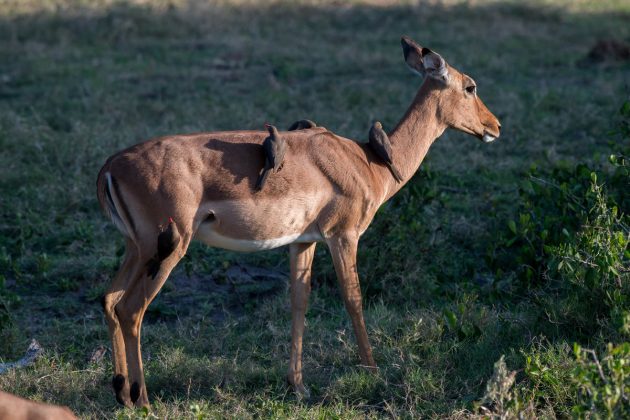
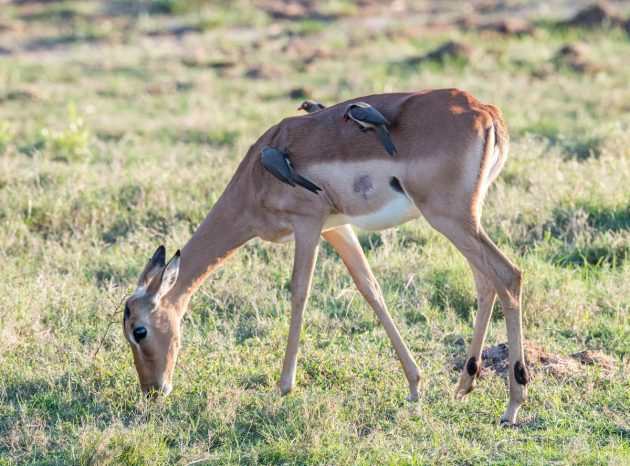
This is an African Sacred Ibis at Ndumo.
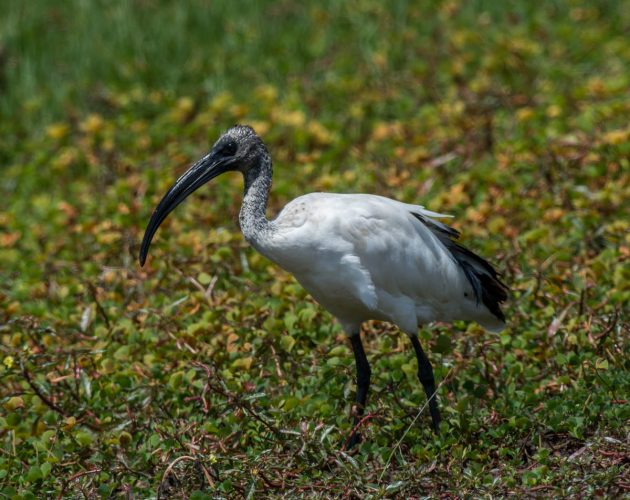
And this is (a bad photo of) an African Sacred Ibis mummy in the British Museum in London (found in Egypt). That’s what happens to you if somebody thinks you are sacred.
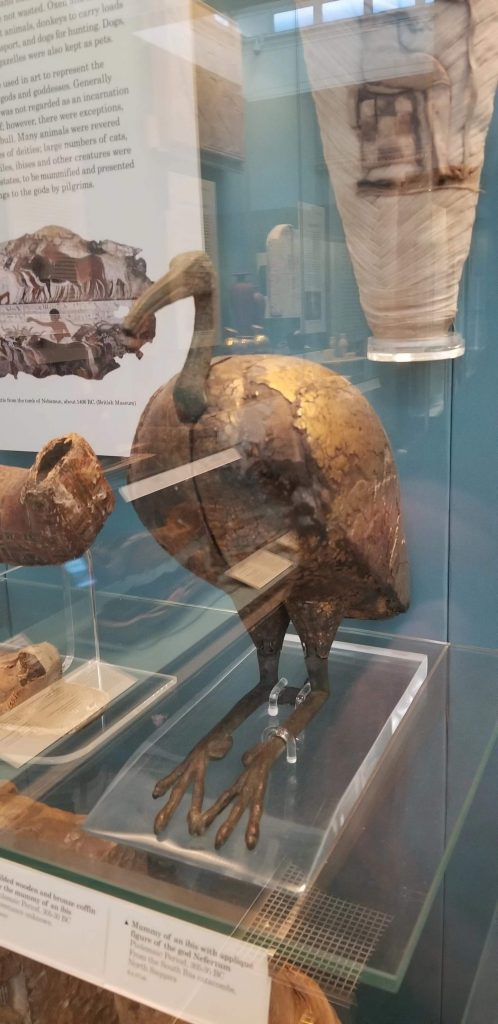
A master’s thesis found that for Spotted Thick-knees living in urban environments, the two biggest causes of injury or death were domestic dogs followed by ‘pool drownings’. Presumably not such a big problem for the thick-knees living at Ndumo.
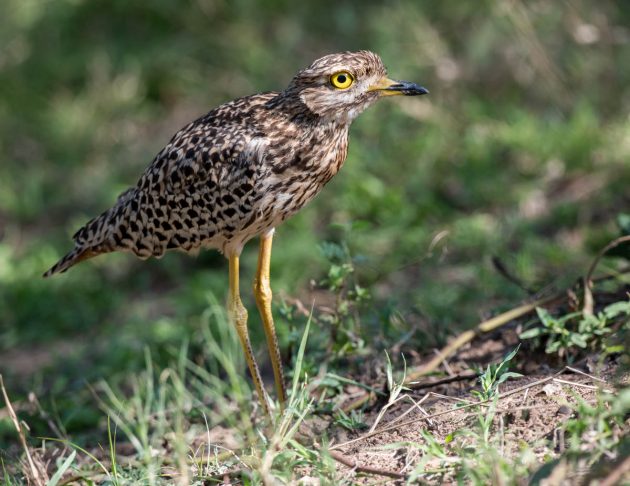
Though this individual looks a bit concerned, but probably not about pool drownings.
One of the most serious environmental issues today certainly is the proliferation of ugly bird nests. The Village Weaver seems to be a particular culprit. Fortunately, some scientists have recognized the severity of the problem, resulting in a paper with the following first sentence: “The destructive nesting and feeding behavior of Village Weavers is worrisome due to the detrimental nature to both agricultural production and scenic beauty of many environments.”
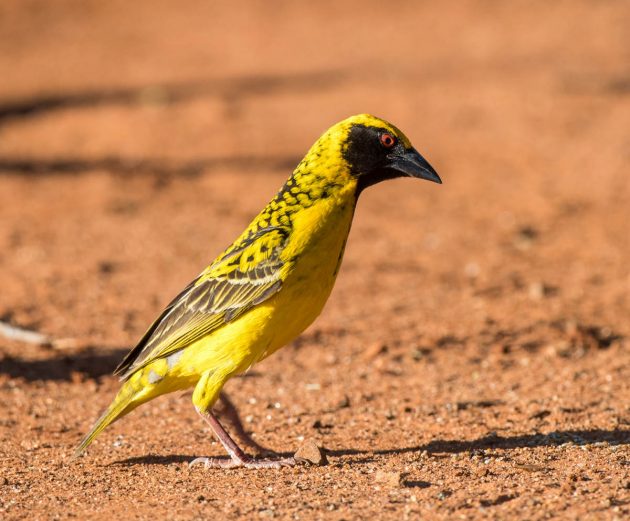
Which scenic spot are you planning to destroy today?
It is hard not to quote directly from a website if you find an interesting sentence such as “According to one 1992 report, Woolly-necked Storks in India use remote wetlands inside forests, which makes them hard to study since they share their habitats with tigers”. On the other hand, this research should be quite simple in South Africa, as shown by the title of a much more recent paper, “Citizen science reveals widespread supplementary feeding of African Woolly-necked Storks in suburban areas of KwaZulu-Natal, South Africa”.
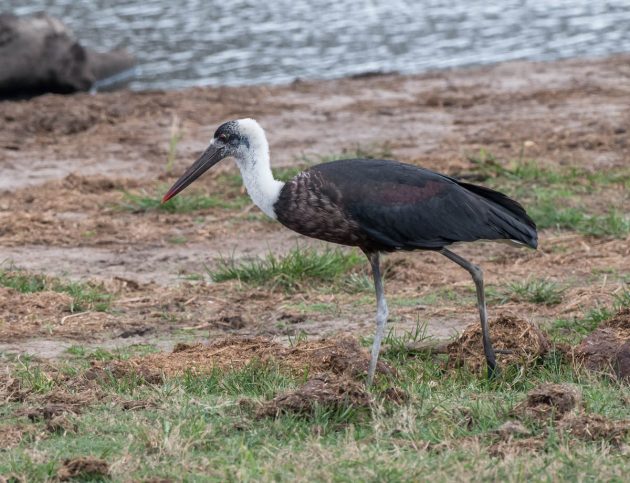
But even though in the HBW both are still combined in one species account, it seems they will be split/have already been split (that is not quite clear to me – so far I can only find one Latin species name).
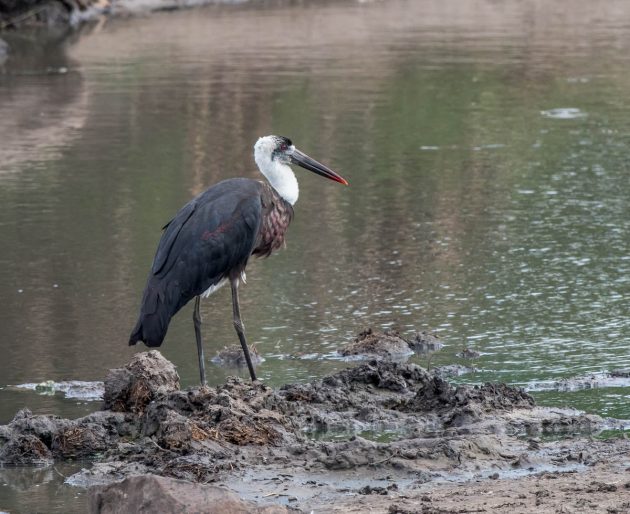
Which by the way is episcopus, or bishop, though the black bishop’s cap that gave the bird this name is not particularly distinct in my photos.
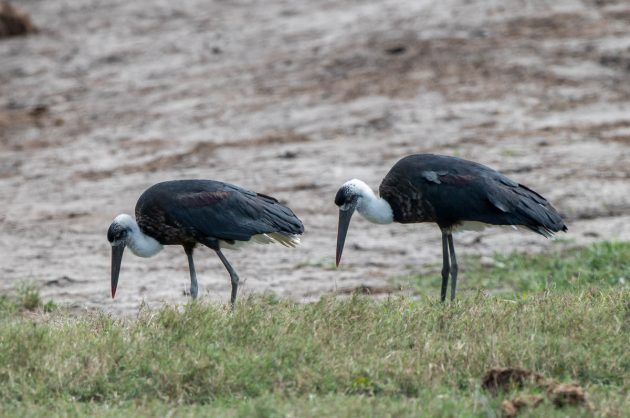
In any case, if these two stork species are split and you want to research the Asian species, you will still have to face the tigers.
It is kind of tough when you already have to look up the second word of the title of a scientific paper: “Is Morphometry an Indicator of the Number of Sexy Syllables in the Song of Yellow-Fronted Canary (Serinus mozambicus)?” Still, the “sexy syllables” bit was a substantial incentive.
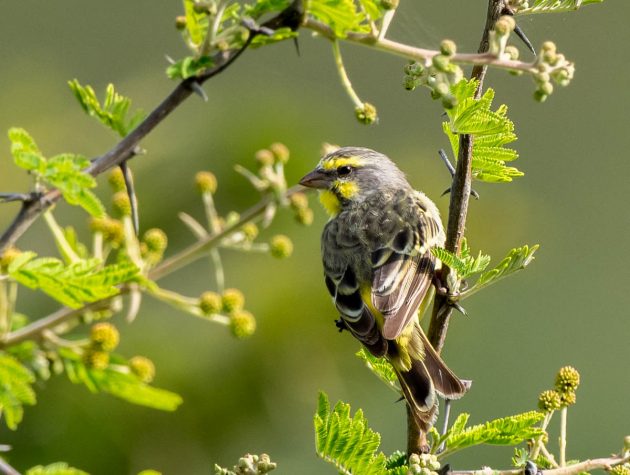
So, I looked it up: Morphometry – the process of measuring the external shape and dimensions of landforms, living organisms, or other objects.
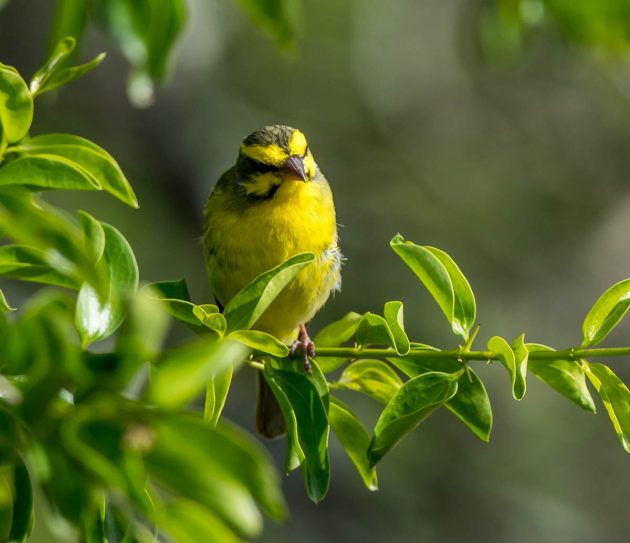
Unfortunately, the research result only seems to be that the sexy syllables that attracted me in the first place are different in different regions, without giving any specific information about what they might be or how I could use them to enhance my own lovelife.
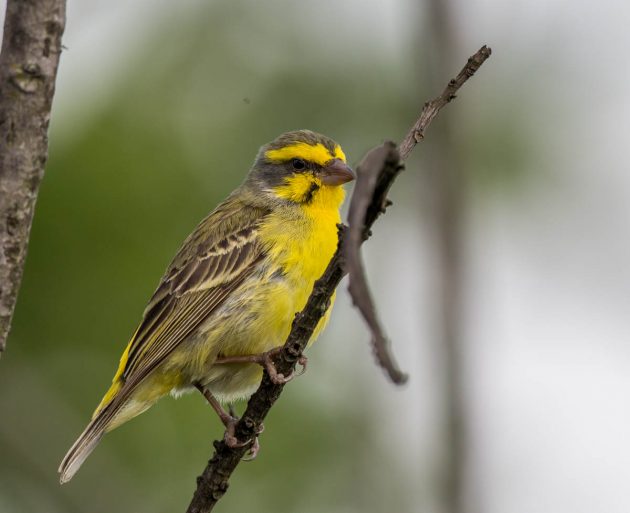
“Do you think I’m Sexy?” “Rod, I am afraid I never found you attractive at all” (slightly obscure Rod Stewart joke).
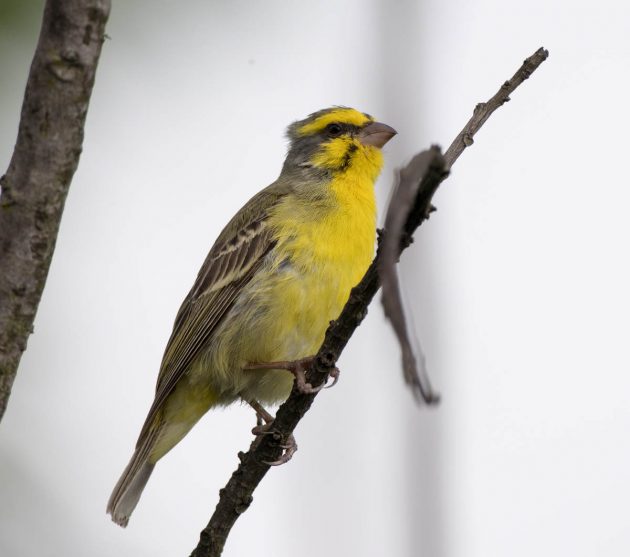
The problem when not traveling alone is that your traveling partners may have other, often bizarre ideas about what else is worth looking for. On this trip, this forced me to participate in a side trip to the nearby Tembe Elephant Park. Mostly just oversized grey mammals there, not too many birds.
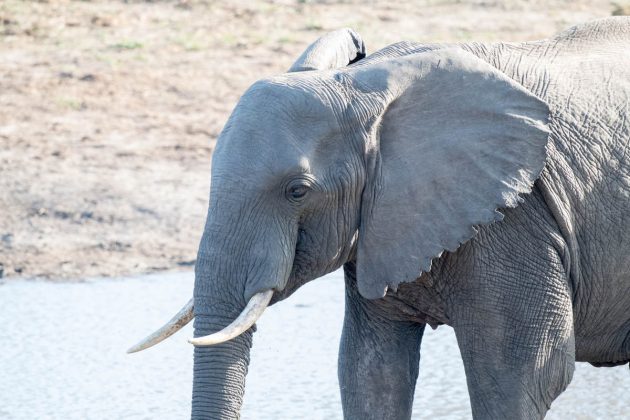
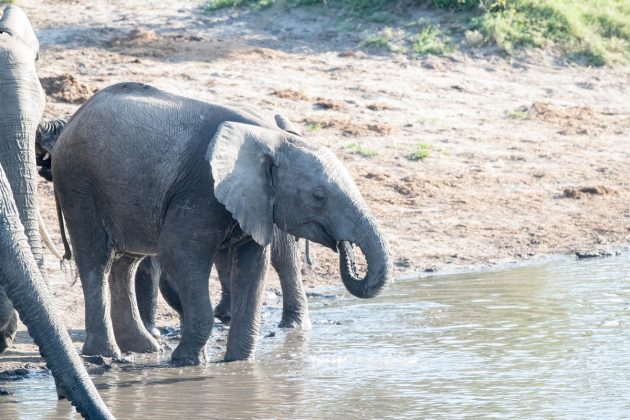
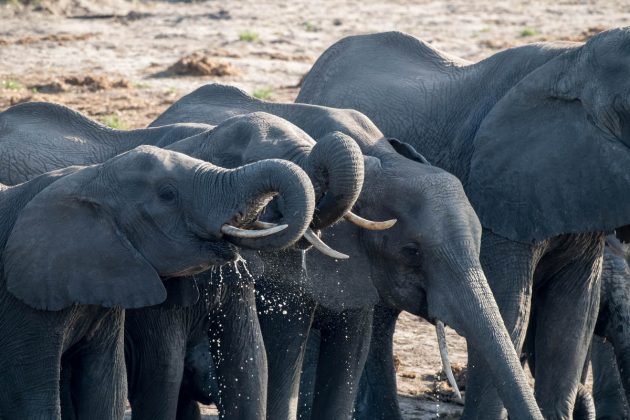
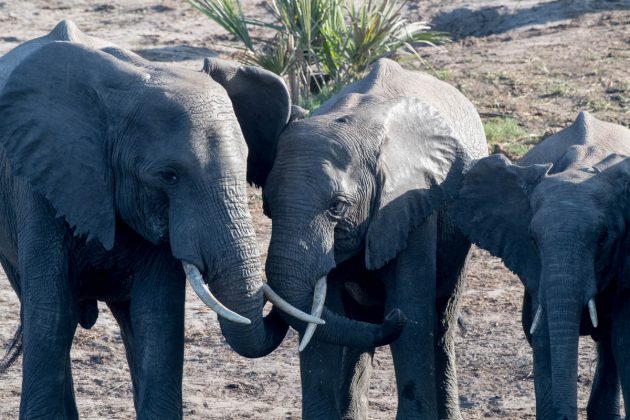

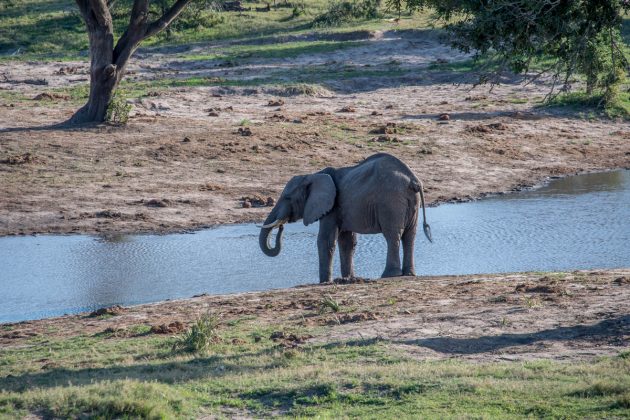

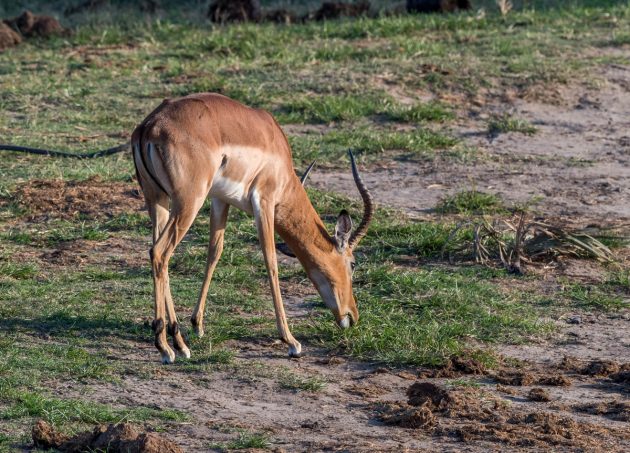
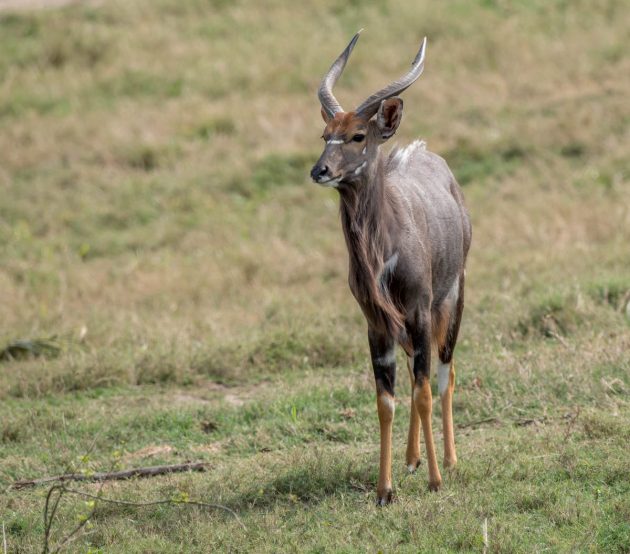
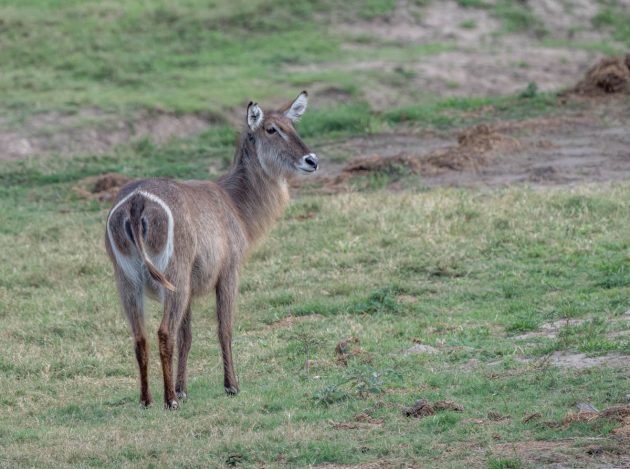
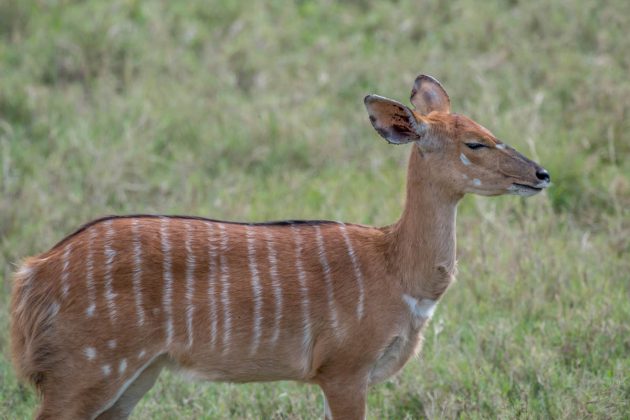
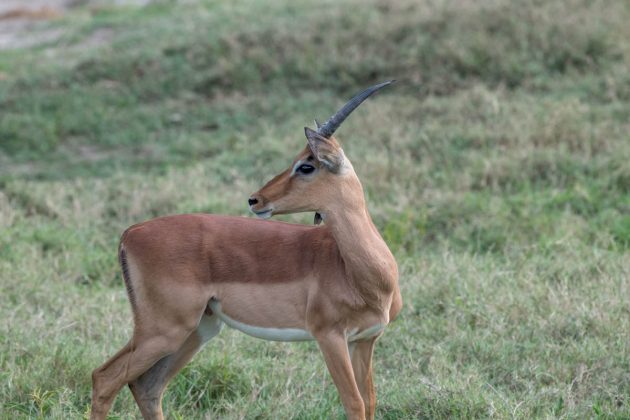






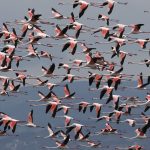



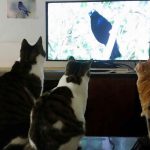


Leave a Comment